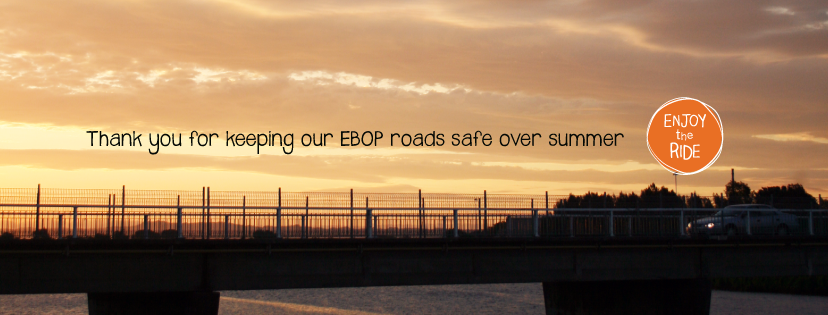
Each year, the Eastern Bay Road Safety Programme kicks off a summer driving campaign aiming to raise awareness of key summer issues, namely the dangers of speeding and driving under the influence of alcohol and drugs.
Eastern Bay of Plenty Road Trip Guide >>
Drive sober
Everyone's perception of how much they can drink is different, but the law is precise: if you're over 20 years of age, the legal blood alcohol limit for driving is no more than 50 milligrams of alcohol for every 100 millilitres of blood.
- There is a zero alcohol limit if you are under 20. That means if you drive after consuming even one drink, you can be charged with drink-driving.
- Be prepared: if you're planning on drinking, plan not to drive.
- Don't go along with other people's bad decisions to drive while they're impaired by alcohol or drugs.\
- Keep off the drugs
- Ask a doctor or pharmacist if the drugs you are taking could affect your driving ability. It is illegal to drive while impaired by drugs – even legally prescribed drugs.
Sunstrike
Sunstrike can occur at any time during the day, but it's most likely during sunrise or sunset, when the sun’s rays hit your windscreen at a low angle.
To avoid a crash, follow the guidelines shown below.
Reducing the danger of sunstrike
- Be prepared for possible sunstrike when driving at sunrise or sunset, especially when turning or driving towards the sun.
- Be especially careful in winter, when sunstrike is more likely to occur because the sun is lower in the sky.
- Keep your windscreen clean, inside and out. Dust and grime on the windscreen can make the effects of sunstrike much worse.
- Wear sunglasses when driving with the sun in your eyes.
- Use your car's sun visors to block the sun.
- If you experience sunstrike, it may be best to pull over and wait for a few minutes until your eyes adjust or visibility improves.
- Be careful if snow has fallen and the sky is clear – sunlight shining on snow can cause 'snow blindness', which produces similar effects to sunstrike.
Distraction
Driving needs your full attention. Driver distraction is a serious road safety issue. Essentially, anything that diverts a driver's attention for more than two seconds can significantly increase the likelihood of a crash or near-crash.
Distraction occurs when a driver’s attention is diverted away from concentrating on driving towards competing events, objects or people.
Alcohol and drugs seriously affect your driving by slowing your reaction times and affecting your senses and judgement. Alcohol is the second biggest contributing factor to road crashes in New Zealand.
Being a responsible driver means never driving when you're over the permitted blood alcohol level or when you've consumed drugs that might impair your judgement.
Once absorbed into your bloodstream, alcohol enters your vital organs, including your brain. The result is slowed reactions, dulled judgement and vision, all of which impair your ability to drive. Drugs have a similar effect. Both alcohol and drugs can also increase the risks of fatigue.
At 250 micrograms per litre of breath or 50 milligrams per 100ml of blood (the current legal limit for drivers 20 years or older) you're still twice as likely to have a crash as a driver with a zero blood alcohol level.